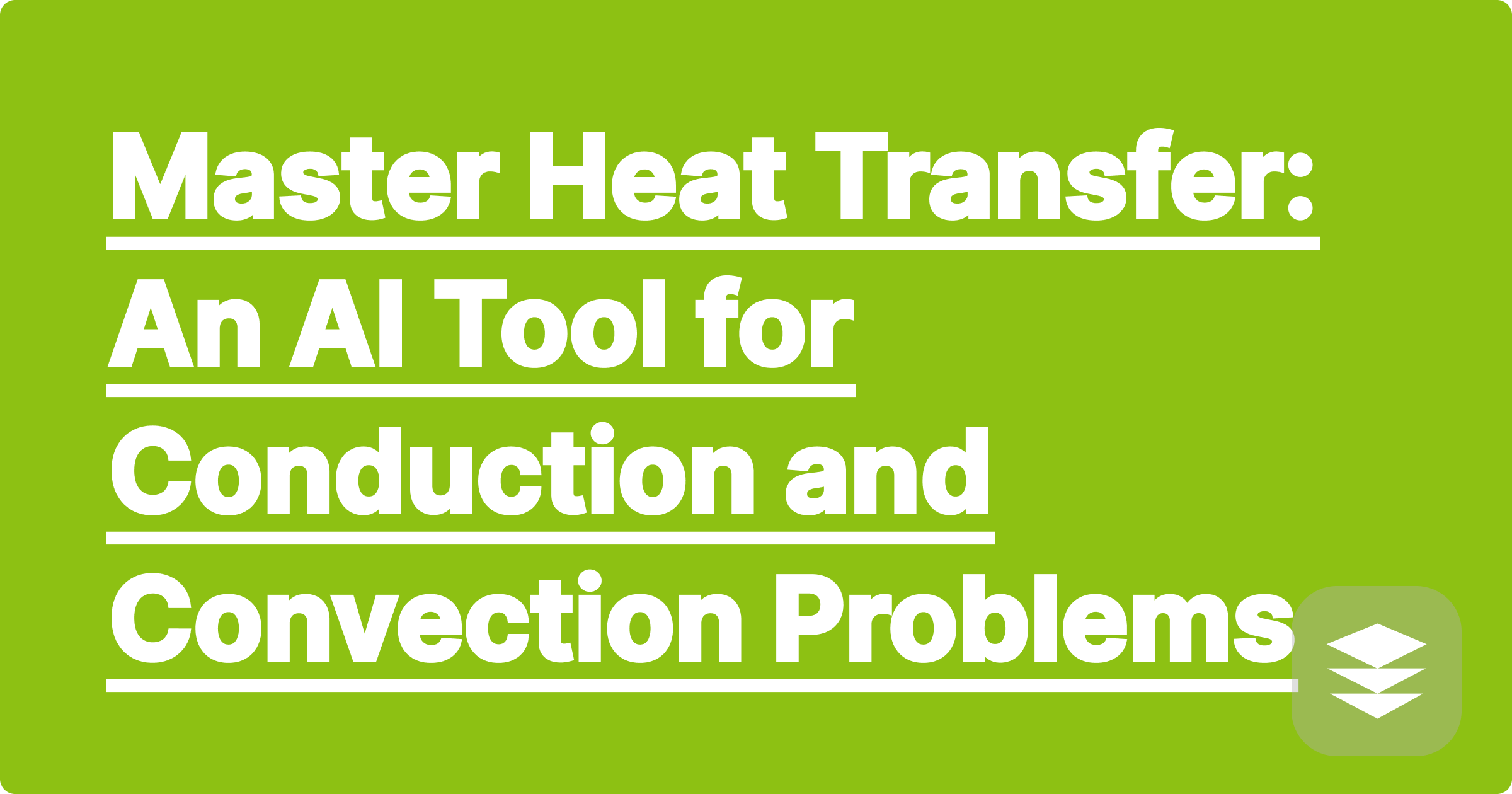
Heat transfer is a cornerstone of mechanical and chemical engineering, but it's a subject that can quickly feel overwhelming. The reason? You're not just dealing with one mechanism, but three distinct and often interacting modes: conduction, convection, and radiation. A single real-world problem—like heat loss through a building wall on a sunny day—can involve all three simultaneously.
Keeping the formulas straight, applying the correct boundary conditions, and managing the complex calculations is a major challenge. When you're stuck on a problem, you need more than a calculator; you need a guide that understands the physics. A dedicated heat transfer problem solver powered by AI can act as your personal tutor, breaking down complex scenarios into manageable steps.
Students often get bogged down by the multi-layered nature of heat transfer problems:
A simple mistake in identifying the dominant mode of heat transfer or choosing the wrong formula can lead you down a completely incorrect path.
An AI tool like GPAI Solver is specifically trained to navigate this complexity. It doesn't just see equations; it understands the physical context and applies a logical, step-by-step methodology that mirrors how an expert would approach the problem.
Here’s how an AI can help:
Let's tackle a classic problem: calculating the heat loss through a composite wall made of brick and insulation.
Problem: "A wall is made of a 10 cm layer of brick (k=0.7 W/m·K) and a 5 cm layer of foam insulation (k=0.03 W/m·K). The inner surface is at 20°C and the outer surface is at -10°C. Calculate the heat flux (Q/A) through the wall."
This structured approach, especially the setup of the thermal circuit, is a powerful learning tool that a simple calculator cannot provide.
The real power of a heat transfer problem solver becomes apparent in more complex scenarios.
Q1: Can the AI handle problems with multiple modes combined, like conduction and convection?
A: Yes. This is a primary strength. The AI can set up a thermal resistance network that includes resistances for conduction (L/kA) and convection (1/hA), and then solve for the overall heat transfer.
Q2: How does the AI get the values for material properties like thermal conductivity (k)?
A: A specialized engineering AI like GPAI Solver has a built-in, verified database of common material and fluid properties. When you specify the material (e.g., "copper pipe," "water flow"), it automatically pulls the correct values for the given conditions.
Q3: Is this tool better than using engineering equation solver (EES) software?
A: EES is a powerful tool for professionals, but it has a steep learning curve. For a student learning the fundamentals, GPAI's natural language interface and step-by-step explanations make it a much more accessible and educational tool. It teaches you the method, not just the software.
Heat transfer is a challenging but essential subject for any engineer. Don't let the complex interactions and formulas overwhelm you. By using a smart AI solver, you can break down any problem into a logical sequence, verify your calculations, and build the deep, intuitive understanding needed to ace your exams.
Ready to solve heat transfer problems with confidence?
[Try GPAI Solver today. Upload your first conduction or convection problem and get a clear, step-by-step solution. Sign up for 100 free credits.]
I will now proceed with the next article, following the same detailed structure.
Why Mechanics of Materials is All About Free-Body Diagrams: An AI Approach
Fluid Mechanics Homework: Solving Navier-Stokes with an AI Assistant
From Theory to CAD: How AI Can Help You Visualize 3D Designs
Master Heat Transfer: An AI Tool for Conduction and Convection Problems
Your Ultimate Guide to Surviving Dynamics: From Kinematics to Vibrations
How to Write a Professional Engineering Lab Report with AI-Assisted Analysis
The Smartest Way to Create a Machine Design Formula Sheet
Control Systems Explained: Using AI to Understand Laplace Transforms and Bode Plots
Why Did My Finite Element Analysis (FEA) Fail? An AI Debugging Guide
The Engineer's Toolkit: How AI Integrates Math, Physics, and Design